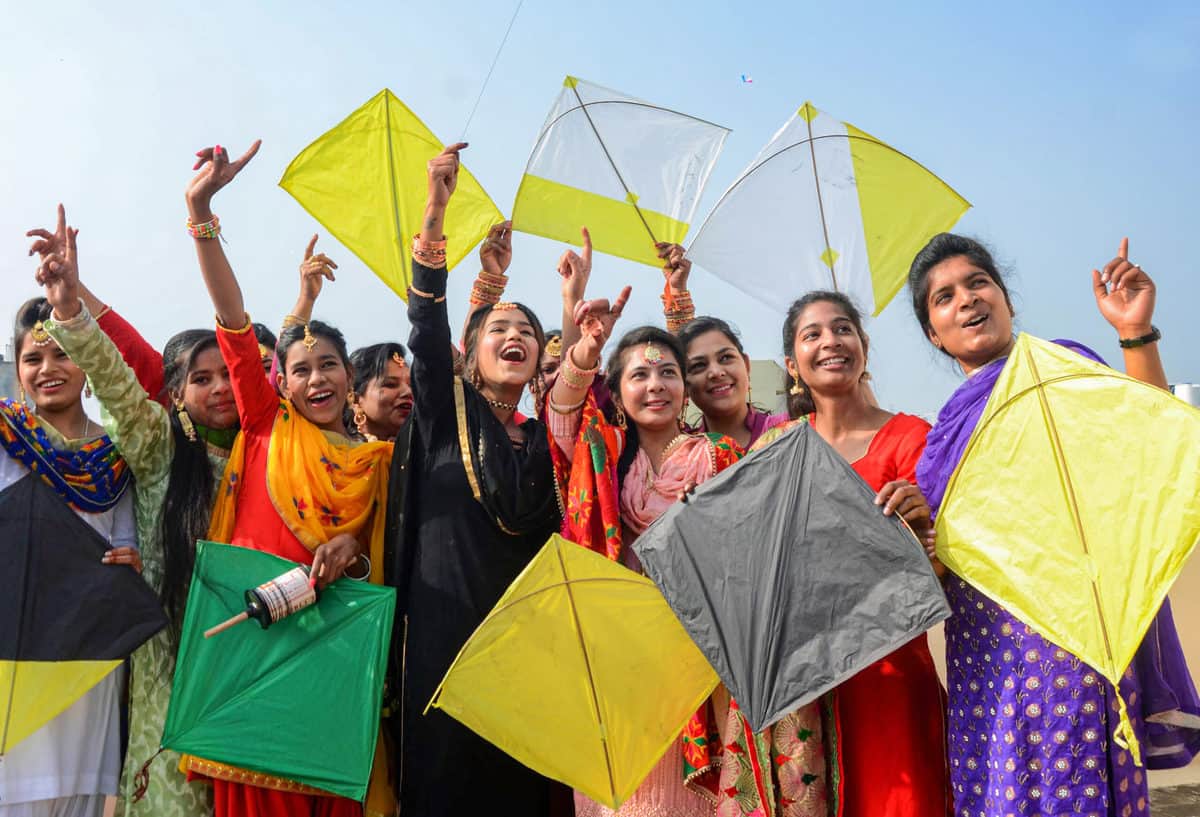
The advent of the Sankranti festival heralds the start of the kite flying season. Children as well as adults will be vying with each other in aerial battles. Kites are among the oldest inventions of mankind and in the course of history, kites have been used for many purposes.
Commanders of Genghis Khan’s army used kites to send signals to their troops and instruct them whether to advance or retreat. The armies of ancient China also made use of kites for military purposes. Princess Gulbadan Begum, daughter of Mughal emperor Babur, a lady who became famous for writing the Humayunnama, has written about her childhood memories of flying kites for recreation with her siblings from the ramparts of Kabul fort.
The earliest written accounts of kites being flown in ancient Indian literature can be found in the poetry of thirteenth century Marathi poet Namdeva. In his poems he has referred to kites which he calls “Gudis”. During the Mughal rule, kite flying became a sport particularly among the nobles.
Kites and a football match
In Kolkata in 1911, during a football match between Mohun Bagan club and the East Yorkshire Regiment, the spectators inside the stadium used kites to signal to the rest of the city all the information about the goals that were being scored. Red meant a British goal and green meant an Indian goal. It was a historic occasion and Mohun Bagan became the first Indian team to win the prestigious IFA shield.
Frenchwoman creates history
On occasions, scientists have used kites to carry out experiments involving aerodynamics. In 2006 a French woman named Anne Quemere made history with the use of a kite. She embarked on an epic voyage when she left New York aboard a small prototype boat towed by a controllable kite. Alone and non-stop, she crossed the Atlantic Ocean and at the end of her trip, 55 days later she was hailed as the first human to have achieved this feat.
In 1972, a British kite maker named Peter Powell developed a steerable kite using two lines to control the kite. The kite that made him famous is known as the “Peter Powell Stunter”. It became an international bestselling kite in 1976. Nowadays competitions are held in kite boarding, kite surfing, kite buggy jumping, and kite land-boarding which are sports that use the power of kites and winds to race across land and water.
Kite capital of the world
In China there is a small city named Weifang in Shandong province. The city is known as the “Kite capital of the World” and is probably where kites were first invented. Every year in April the city hosts the Weifang International Kite Festival which is believed to be the biggest in the world. The famous Dragon kites of China are widely seen during this festival and the participants are people with decades of experience who can fly these kites with great dexterity. Huge Dragon kites battle it out with each other and it is a sight to behold as they weave their magic in the sky.
Other kite festivals
Other important kite festivals across the world include the Hamamatsu Giant Kite festival in Japan, Bali Kite Festival in Indonesia, Festival of Winds in Australia, Blossom Kite Festival in Washington DC and the International Kite Festival in Gujarat in India. The festival in Gujarat is going on now. A total of 153 kite fliers from 55 countries across the world are taking part in the programme.
Kites are an inexpensive way of having fun among both young and old. Sending a kite soaring into the blue sky and controlling it as it plunges and rises is an experience that can only be felt and not described. The kite symbolises freedom and courage while the empty sky is a vast space without boundaries. At such times, holding a kite string in one’s hands is like holding happiness on a string.



